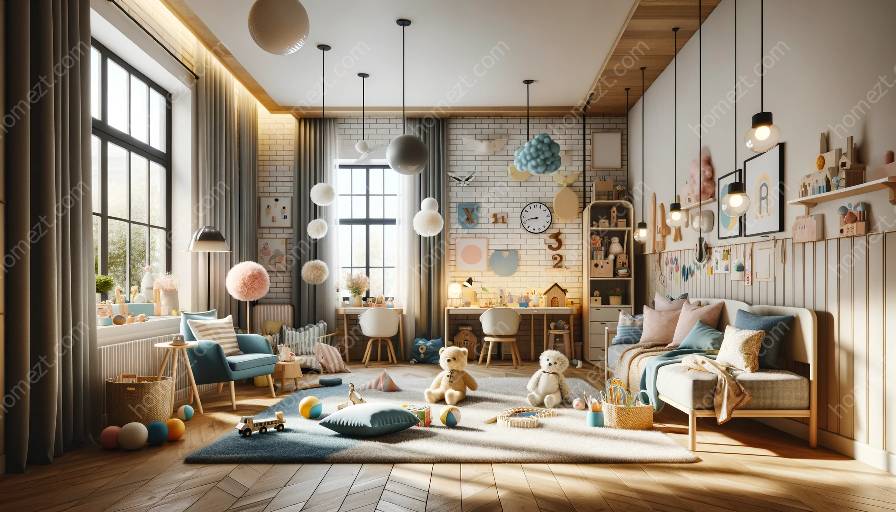Designing a children's room involves more than just creating a space that looks visually appealing. It also requires careful consideration of environmental factors to ensure the health, safety, and well-being of the child. When it comes to children's room design, understanding and integrating environmental considerations is crucial for creating a sustainable and eco-friendly space.
Creating a Sustainable Environment
Designing a sustainable children's room involves using eco-friendly materials and practices that minimize the impact on the environment. Selecting furniture and decor made from sustainable materials such as bamboo, reclaimed wood, and non-toxic paints can promote a healthier indoor environment while reducing the carbon footprint associated with traditional manufacturing processes.
Consider incorporating energy-efficient lighting, such as LED bulbs, and utilizing natural light to reduce energy consumption. Additionally, integrating eco-friendly textiles like organic cotton or linen for bedding, curtains, and upholstery can contribute to a more sustainable and non-toxic living environment for children.
Promoting Indoor Air Quality
Indoor air quality is a critical consideration in children's room design. Selecting low-VOC (volatile organic compound) paints, adhesives, and finishes can help minimize harmful off-gassing and create a healthier indoor air environment. Furthermore, choosing natural, hypoallergenic materials for flooring and furniture can reduce the presence of allergens and toxins that may affect children's respiratory health.
Integrating adequate ventilation, such as windows that can be opened or a mechanical ventilation system, can also help improve indoor air quality by promoting air circulation and reducing the buildup of pollutants.
Fostering a Connection with Nature
Bringing elements of nature into children's room design can offer numerous benefits, including improved well-being and cognitive development. Consider incorporating biophilic design principles by introducing natural materials, plants, and nature-inspired decor elements to create a sense of connection with the outdoors.
Additionally, providing access to outdoor views, whether through windows or by creating a nature-inspired feature wall, can help children feel more connected to the natural environment, promoting a sense of calm and well-being.
Designing for Safety and Functionality
Ensuring that a children's room is designed with safety in mind is essential for creating a secure and nurturing environment. This includes selecting furniture with rounded edges, securing heavy or tall furniture to the wall to prevent tipping, and using non-toxic, child-safe materials throughout the room.
Consider incorporating storage solutions that promote organization and safety, such as low, easily accessible shelves and drawers, to minimize potential hazards. Additionally, integrating child-friendly design elements, such as soft furnishings and play areas, can enhance the functionality and safety of the space.
Encouraging Sustainable Habits
Designing a children's room with sustainability in mind presents an opportunity to instill eco-friendly habits in young individuals. Incorporating educational elements, such as books and toys that promote environmental awareness and conservation, can help cultivate a sense of environmental responsibility from an early age.
Furthermore, involving children in the process of caring for plants, recycling, and conserving resources within their room can empower them to become stewards of the environment, fostering a lasting commitment to sustainable living practices.
Conclusion
Integrating environmental considerations into the design of a children's room is essential for creating a space that promotes the health, well-being, and environmental consciousness of young individuals. By prioritizing sustainability, indoor air quality, safety, and a connection with nature, it is possible to design a children's room that not only looks aesthetically pleasing but also supports a healthier planet for future generations.


























